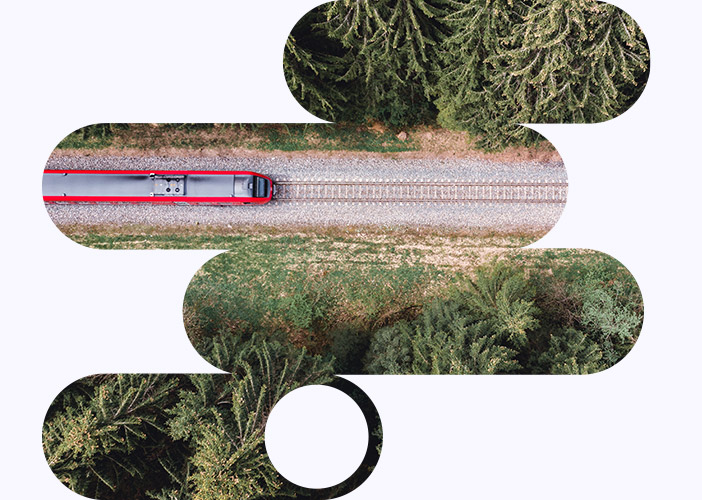
Transportation
Energy transition, increasing urban mobility and multiple interconnections between cities and countries are all new challenges.
context
The current state of transport infrastructures cannot cope with the continuous increase in passengers. Urbanisation, environmental challenges, and interoperability needs will radically change transport systems. Stricter requirements for safety, reliability, comfort, and environmental standards must also be met.
Disruptive digital technologies will revolutionise projects and transport infrastructures, which are becoming increasingly complex, due to the increasing number of users.
1- Finding solutions for ageing transport infrastructures and population growth
Faced with an increasing passenger numbers, public transport networks face a challenge to maintain and upgrade their existing infrastructures to increase capacity, while ensuring continuity of service. Renovation, upgrades, and maintenance operations must be seen as an opportunity to introduce digital technologies that offer predictive solutions. These can improve the reliability of service, with minimal or no downtime.
2- Developing sustainable infrastructures that consume less energy
Infrastructures must become ‘smarter’. They must incorporate modern information and communication technologies to ensure safety, speed, efficiency, and environmental performance via effective traffic management and high-performance information and alert systems. The use of PLM (Product Lifecycle Management) tools is a system-based approach that has become indispensable to ensure control over construction costs and energy management.
3- Meeting the challenge of international competition between countries
To make themselves attractive to investors, territories must have an efficient transportation network offering local services. The challenge is to offer the safest and highest quality services possible (reliability, comfort) in compliance with environmental standards, while meeting the specific needs of each territory and its users. This means offering diversified, up to date and economical solutions.
4- Considering the critical nature of transport infrastructures
Transportation networks have a critical role in our society. They are the lifelines that connect our towns and cities and allow us to gather and interact. To guarantee smooth and fluid operations, it is crucial to have reliable and safe facilities that provide services which meet users’ needs, made possible by implementing digital solutions and systems.
OUR EXPERTISE IN TRANSPORTATION
Our expertise, in complex and highly regulated environments, is inherited from our developments in at least four countries: project management of large transportation infrastructures in France, design and project management of large transportation infrastructures in India, safety analysis in the UK, and design of transportation infrastructures in Saudi Arabia.
We provide assistance to public and private players in urban, suburban, regional and international networks, both for rail and air transport:
- Metros & railways: we have provided consultancy services on metro rail projects for three decades and have strong expertise in traffic network, tunnels, underground crossovers, elevated viaducts and stations or underground stations. We have also developed expertise over the years in planning entire rail systems, including track design, associated rail infrastructure such as station buildings, locomotive sheds, water supply, electrical services, rail accessory production plants, rail car unloading management, and the rehabilitation of rail structures.
- Airport & Aviation: we offer comprehensive design and project management consultancy services in the field of airports and aviation. We have expertise in techno-economic feasibility studies and master planning of airport infrastructure, including airside and landside infrastructure design as well as the design of integrated terminal buildings catering to international and domestic traffic, the design of air traffic control towers, ground handling facilities, and cargo terminals, including logistic facilities for storage and warehousing.
For both rail and air sectors, our major strengths lie in managing large infrastructure projects and our ability to integrate systems.
The systems delivered by Assystem for transportation networks include instrumentation and control systems (signalisation, CBTC, ATS), system equipment (rolling stock, railway, electric traction, overhead lines, garages) electromechanical equipment (HVAC, smoke extraction, people with reduced mobility, elevators, escalators), power distribution (transformer and distribution substations), information and surveillance systems (passenger information systems, vehicle scheduling control system, video surveillance).
We are also involved in numerous infrastructure projects such as roads, bridges, etc. Discover our expertise for urban and territorial development.
OUR MAIN OFFERINGS
-
Understanding of sector specific and local regulations
-
Using digital technologies for interface management and legacy inclusion
-
Enabling development of green hydrogen in mass transportation
-
Continuity between development and operations
Learn more about our Engineering, Digital and Project Management activities.
